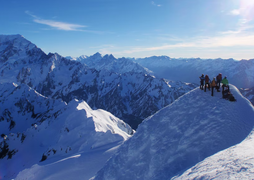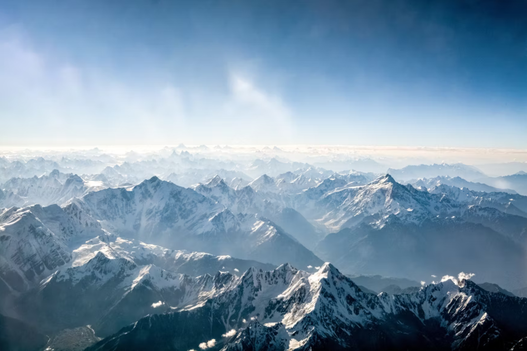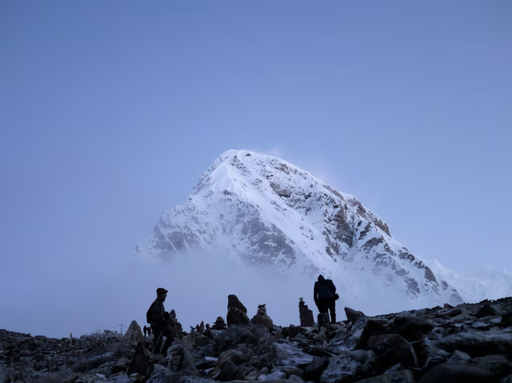How to Prepare for a Mount Everest Expedition
Written by Tracy Rodriguez

If you’re on this blog post, then that means that you’re looking to learn “How to Prepare for a Mount Everest Expedition,” am I right? Well Run on History is excited to provide you with some essential ways of preparing for a Mount Everest expedition. With that being said, you might already know some information about Mount Everest. However, we would still like to provide our readers with a little background about the mountain range itself to warm you up for the next read to come. For some this might be refreshing your memory and for others you might learn something new, but either way we hope that you can learn something from the information we have provided for you.
Background on Mount Everest
Mount Everest was named after a man named George Everest, who happened to be the Surveyor General of India between the years 1830-1843. The Survey General of India was essentially responsible for mapping out most of India. Andrew Waugh, who served under George Everest, had suggested that the mountain be named after Everest, himself. Although Everest didn’t really have much to do with discovering the mountain itself, he was honored for his contributions to the survey as the iconic peak was named after him. Today, Mount Everest is one of the tallest mountains on earth. It is located in Nepal, a country in South Asia, reaching a height of 29,032 feet or 8,848 meters. Scientists have even mentioned that the mountain continues to grow by 4mm, or 0.16in each year. Edmund Hillary and Tenzing Norgay were the first expeditioners to successfully reach the top of the mountain, where they got the opportunity to overlook the many clouds and view of the Himalayas once a person reaches the top. Though they managed to obtain this goal, the climb was not particularly easy. In fact, more than 300 people have died attempting to reach the summit of Mount Everest. But it is still a relatively small number compared to those who have made it out just fine. As of now, 6,014 people have climbed Mount Everest and successfully reached the peak of the mountain.
If you’re fascinated in learning more interesting facts about Mount Everest, then you can also check this article here to learn more about the extraordinary mountain itself.
Also, here at Run on History we have expeditions already prepared for you if you sign up with us and racing through Mount Everest is one of them! It can be completed at your own pace, and to recognize our hard work and determination after completing your journey, we’ve created unique medals based on the race you choose, to send them right to your doorstep. If you want to learn more, then click here.
Mount Everest was named after a man named George Everest, who happened to be the Surveyor General of India between the years 1830-1843. The Survey General of India was essentially responsible for mapping out most of India. Andrew Waugh, who served under George Everest, had suggested that the mountain be named after Everest, himself. Although Everest didn’t really have much to do with discovering the mountain itself, he was honored for his contributions to the survey as the iconic peak was named after him. Today, Mount Everest is one of the tallest mountains on earth. It is located in Nepal, a country in South Asia, reaching a height of 29,032 feet or 8,848 meters. Scientists have even mentioned that the mountain continues to grow by 4mm, or 0.16in each year. Edmund Hillary and Tenzing Norgay were the first expeditioners to successfully reach the top of the mountain, where they got the opportunity to overlook the many clouds and view of the Himalayas once a person reaches the top. Though they managed to obtain this goal, the climb was not particularly easy. In fact, more than 300 people have died attempting to reach the summit of Mount Everest. But it is still a relatively small number compared to those who have made it out just fine. As of now, 6,014 people have climbed Mount Everest and successfully reached the peak of the mountain.
If you’re fascinated in learning more interesting facts about Mount Everest, then you can also check this article here to learn more about the extraordinary mountain itself.
Also, here at Run on History we have expeditions already prepared for you if you sign up with us and racing through Mount Everest is one of them! It can be completed at your own pace, and to recognize our hard work and determination after completing your journey, we’ve created unique medals based on the race you choose, to send them right to your doorstep. If you want to learn more, then click here.

Preparing for the Expedition
Now that you’ve been provided with a little bit of background on Mount Everest. It’s time to talk about preparing for an expedition. As mentioned before, attempting a journey upon Mount Everest is not easy, but it’s also not impossible. Like any exploration, it is important to be prepared so you can avoid any conflict that might come your way. We can help with that, with the following tips that you’re about to read in the next few passages.
For starters, before you set out on your journey, it’s essential to consider your physical, emotional, and psychological health. It’s also important to ask yourself, “Is this something that I’m prepared to take on?” The reason we mention this is because on average, it takes 2 months to reach the summit of Mount Everest. This means that throughout your expedition you will have to endure having to get used to the extreme cold, followed by limited breathing due to the lack of oxygen when you’re up there, and likely have to fend for your safety because of its dangerous conditions.
If you feel that you’re ready to take on that challenge, then feel free to continue reading. If you’re not, don’t worry, that’s why Run On History is here to give you tips on how you can prepare yourself beforehand if you’re still interested in learning how.
Now that you’ve been provided with a little bit of background on Mount Everest. It’s time to talk about preparing for an expedition. As mentioned before, attempting a journey upon Mount Everest is not easy, but it’s also not impossible. Like any exploration, it is important to be prepared so you can avoid any conflict that might come your way. We can help with that, with the following tips that you’re about to read in the next few passages.
For starters, before you set out on your journey, it’s essential to consider your physical, emotional, and psychological health. It’s also important to ask yourself, “Is this something that I’m prepared to take on?” The reason we mention this is because on average, it takes 2 months to reach the summit of Mount Everest. This means that throughout your expedition you will have to endure having to get used to the extreme cold, followed by limited breathing due to the lack of oxygen when you’re up there, and likely have to fend for your safety because of its dangerous conditions.
If you feel that you’re ready to take on that challenge, then feel free to continue reading. If you’re not, don’t worry, that’s why Run On History is here to give you tips on how you can prepare yourself beforehand if you’re still interested in learning how.
Mountaineer Training
It's crucial to train beforehand to reach the summit of Mount Everest. We mention this because your body, particularly your lungs, endurance, and muscles need to be prioritized to be able to handle the conditions up there. In addition, your body also has to be in good shape to carry all your necessities throughout the journey. Luckily, there are physical trainers out there with experience in mountaineering who can create a plan for you to help build that within you through practice.
Gearing Up
Once you’ve received enough training and your instructor believes you’re ready to take on the challenge of climbing up Mount Everest, it’s time to think about your gear. Because the weather is so cold and the conditions unfamiliar to your body, having all your necessities and layering up on clothing are other important factors to consider.
If you’re looking to see the full list of gear that we recommend, then click here to see the list of gear we recommend before climbing up Mount Everest.
Guides
No one should climb Mount Everest alone. Having a guide or sherpa is very much necessary to accomplish this goal. There are two base camps on Mount Everest. One on the northern side, in Tibet and the other on the southern side, which is Nepal. On either side, there are guides/Sherpas that are there to assist you accomplish this expedition. Remember that if you decide to do this that you will be on tribal land, and many guides or sherpas risk their lives simply to make ends meet back at home, so we’d like you to be mindful that it’s important to show them grace and gratitude for helping you throughout this expedition.
It's crucial to train beforehand to reach the summit of Mount Everest. We mention this because your body, particularly your lungs, endurance, and muscles need to be prioritized to be able to handle the conditions up there. In addition, your body also has to be in good shape to carry all your necessities throughout the journey. Luckily, there are physical trainers out there with experience in mountaineering who can create a plan for you to help build that within you through practice.
Gearing Up
Once you’ve received enough training and your instructor believes you’re ready to take on the challenge of climbing up Mount Everest, it’s time to think about your gear. Because the weather is so cold and the conditions unfamiliar to your body, having all your necessities and layering up on clothing are other important factors to consider.
If you’re looking to see the full list of gear that we recommend, then click here to see the list of gear we recommend before climbing up Mount Everest.
Guides
No one should climb Mount Everest alone. Having a guide or sherpa is very much necessary to accomplish this goal. There are two base camps on Mount Everest. One on the northern side, in Tibet and the other on the southern side, which is Nepal. On either side, there are guides/Sherpas that are there to assist you accomplish this expedition. Remember that if you decide to do this that you will be on tribal land, and many guides or sherpas risk their lives simply to make ends meet back at home, so we’d like you to be mindful that it’s important to show them grace and gratitude for helping you throughout this expedition.
|
Stay Safe
Yes, it would be awesome to reach the top of the summit of Mount Everest. But we want to remind you that your life is still important, and if you’re a thrill seeker, finalizing your decision to do this, then please remember to try to always stay safe. By that, we mean don’t rush the outcome, as slow and steady often wins the race. So take your time prepping and gearing up, so that you go fully confident with this expenditure and lack of doubt. |

